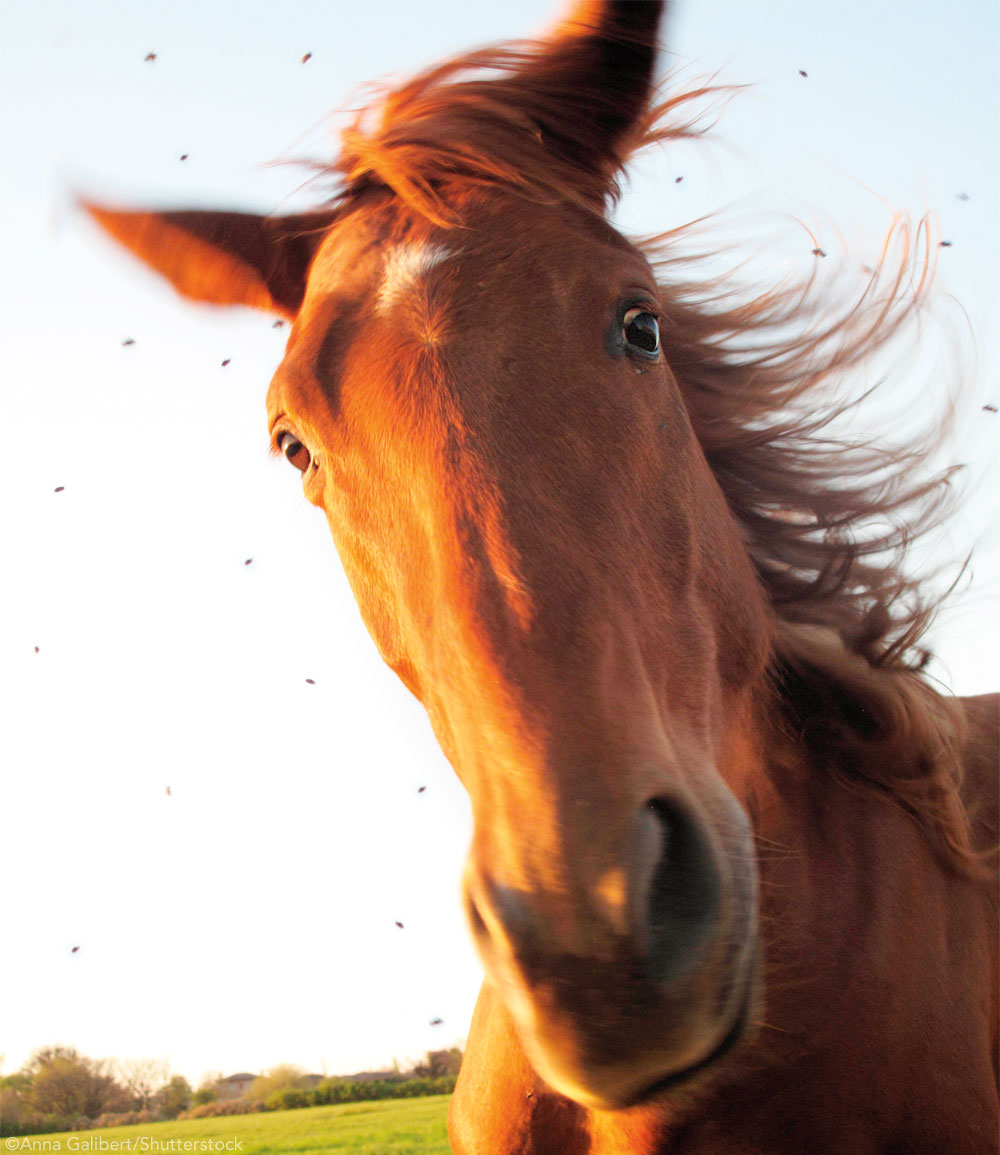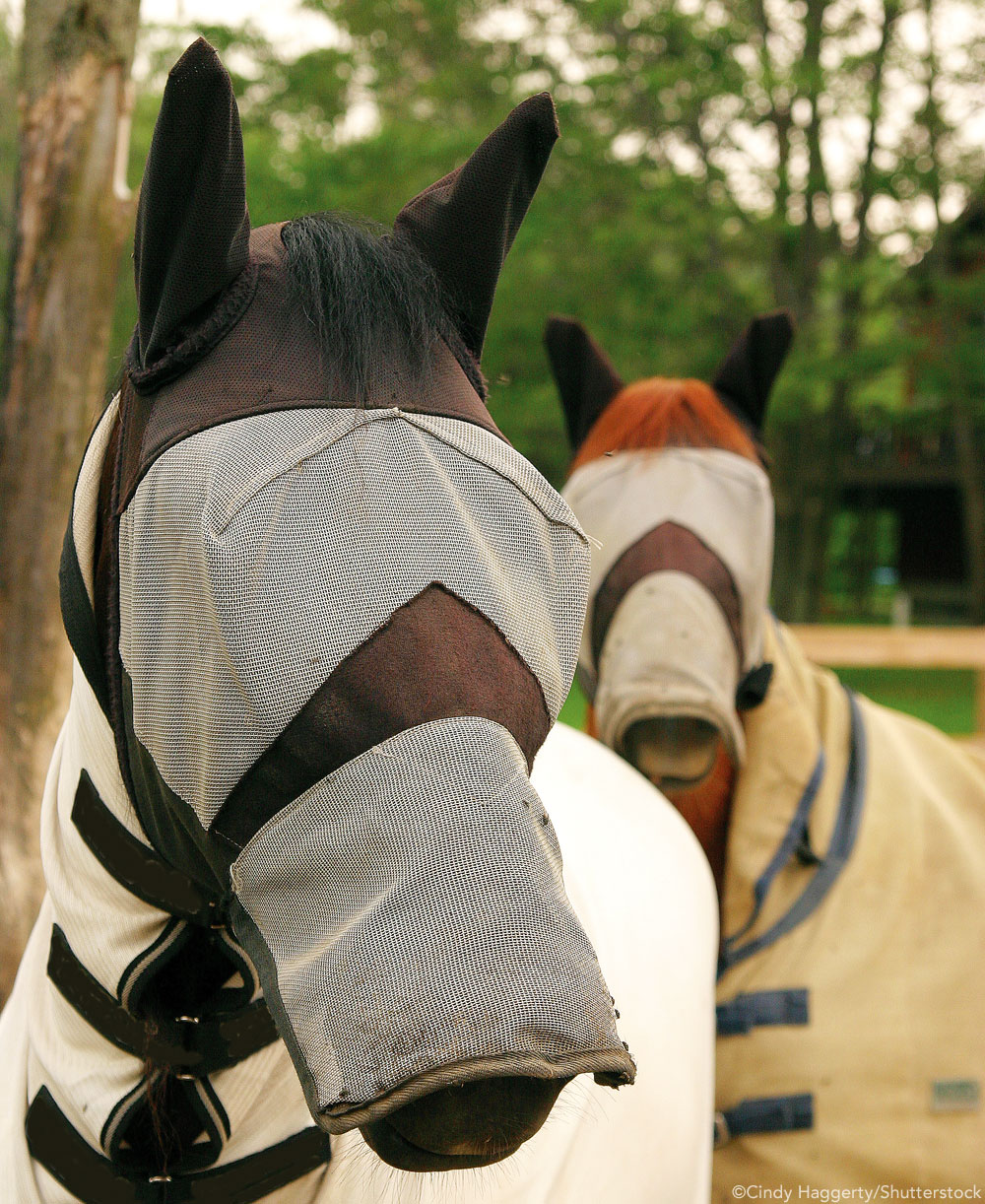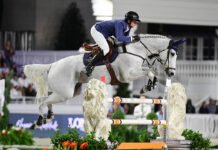It’s a battle that rages constantly and a war that’s tough to win. Yet we must fight on if we want to protect our horses from the ever-intrusive fly. The best way to tackle these winged pests, who begin their siege on horses around this time every year, is through a three-pronged approach: property protection, direct defense and going under cover.

Protect Your Property
The best way to combat flies is by ambushing them where they breed. By making it difficult for flies to reproduce, you can keep their numbers to a minimum. Here are some ways to make your property less hospitable to flies:
Scoop manure. Flies love fresh manure. Try to clean your horse’s stall or paddock at least twice a day during fly season. If you horse lives in a pasture, keep manure picked as much as possible. During the hot, dry summer months, you can spread it with a harrow. Be sure to keep horses off the pasture for a few weeks afterward to allow infective parasite larvae in the manure to die off.
If you’re working on a very small amount of land, it’s best to store manure in a sealed bin until you can dump it. This will keep flies from being be able to lay eggs in it, and will seal in the eggs that have already been laid.
If you have more room, keep your muck heap as far from the barn as possible and cover it with a tarp.
Toss wet bedding. Damp straw, shavings and hay are a prime place for flies to breed.
Fix leaks. Look for dripping faucets, waterers or hoses. Wet areas attract flies; they like to breed in damp places.
Cut vegetation. Stable flies breed in rotting plants and rest in tall vegetation when they’re not bothering your horse. Keeping your weeds mowed will eliminate resting sites for flies and discourage them from hanging around your property.
Cover trash. Flies have a good sense of smell, and uncovered garbage will attract them from miles around. Once they gain access to trash, they will lay eggs in rotting food. Keep your property clear of trash, and keep garbage bins tightly covered.
Feed-through control stops flies before they start. An additional way to keep flies from breeding on your property is to use feed-through fly control products containing insect growth regulator (IGR).
These work by preventing stable and house fly larvae from developing in your horse’s manure. They don’t kill adult flies, but they prevent new ones from maturing. Feed-through fly products come in pellets and are fed daily during fly season.
Biological controls. The good news is that flies have enemies: tiny wasps that feed on the pupa of the developing fly. The wasps don’t bother horses or people, and are so small they’re barely noticeable. They eat the fly larvae before they can turn into full-grown, biting flies. To keep your property well stocked with these fly-killing wasps, release a new batch each month.
Fly traps. Fly traps work by attracting flies, either through color or scent. Once the fly lands on or enters the trap, it can’t escape.
The simplest type of trap uses a sticky surface to catch flies. The flies are attracted by the color—usually orange or yellow—and land on it. The glue-covered surface sticks to their feet, keeping them from flying away.
Other traps use bait to lure the fly. Some have water inside, and the flies drown because they can’t escape. Others simply trap them inside the container, where they die.
Direct Defense: Spray Away
You’ve done everything you can to keep flies from advancing into your territory, but no matter how hard you try, some of the intruders still break through your defenses. Your next step is to protect your horse with the direct application of one of the fly’s biggest foes: fly repellent.
Go to your local feed store and you’ll see a variety of different fly sprays, wipe-ons and roll-ons for sale. Most of these products contain the active ingredient pyrethrin, a natural substance that kills flies on contact and keeps them from biting.
Pyrethrins work by attacking the fly’s nervous system, and provide a quick knockdown after landing. Flies don’t like the smell of pyrethrins either, so sprays containing this ingredient repel the broadest number of flies. They might land on your horse, but they won’t stick around.
Fly repellents are made with either oil or water as a base. Oil-based sprays last longer than water-based, while water-based products are lighter and usually don’t smell as strong.
To get the most of your fly spray, apply them to the areas on your horse most often besieged by flies. Put roll-on fly protection on the face area around the eyes, nostrils, muzzle and ears. Use spray on your horse’s body, including the legs and underbelly. When using sprays, give the area a light but thorough coating rather than just a quick spritz. If you don’t put enough on, the product won’t work.

Take Cover
Another option is to cover up with fly masks, flysheets and leg wraps.
Fly mask. Flies are notorious for feeding on the mucus in your horse’s eyes, causing irritation and potentially spreading disease. A fly mask keeps flies from getting into your horse’s eyes, and a mask with attached ear covers can also keep biting gnats away.
Fly sheet. A fly sheet is made of light mesh that prevents flies from landing directly on your horse. It protects his chest, back, sides and hindquarters from biting flies. Add mesh leg wraps to protect the lower legs, and flies will have a hard time finding a place to bite your horse.
By using this three-pronged approach, you can make plenty of headway in the war against flies. While you’ll never get rid of every single fly, you can certainly make a difference.
Audrey Pavia is a freelance writer and the author of Horses for Dummies. She is based in Southern California.
This article originally appeared in the May 2016 issue of Horse Illustrated magazine. Click here to subscribe!







great info